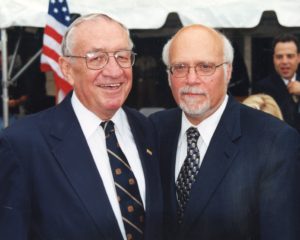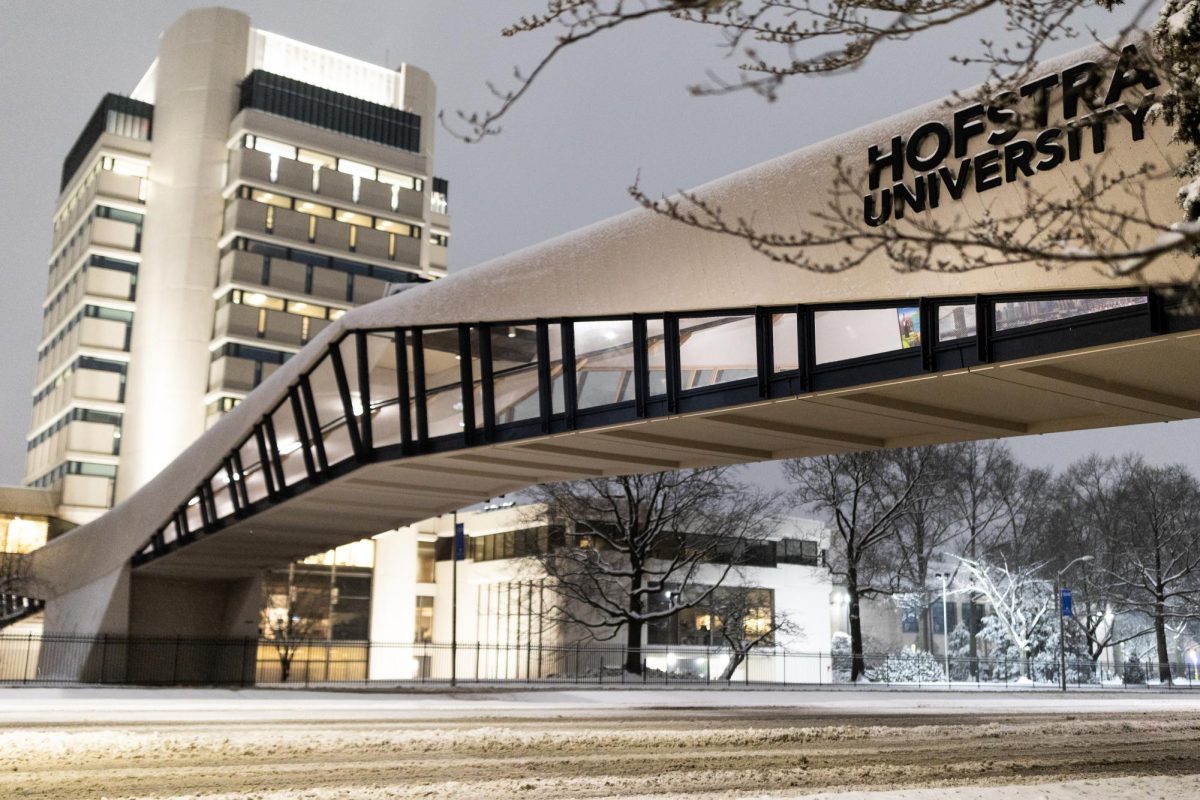Former Hofstra president, Dr. James M. Shuart, who shaped the university into an internationally renowned institution, died early Friday, May 13 at the age of 85. As the university’s seventh president, Shuart was best known for physical campus developments, expansion of academic offerings and launching athletics to Division 1 status. He served as president from 1976 to 2001.
“Hofstra is James Shuart’s life,” the New York Times wrote back in 1996 as Shuart celebrated his 20th year as president. Before leading for a total of 25 years, Shuart attended Hofstra and earned his Bachelor of Arts in 1953 and Master of Arts in 1962. He then earned a doctorate of philosophy from New York University in 1966.
According to a message from President Stuart Rabinowitz, Shuart even met his wife at Hofstra. He married his college sweetheart, Marjorie Strunk Shuart, in the spring of his senior year. Their two sons James and William, and daughter-in-law, all graduated from Hofstra as well.
Shuart’s professional career at the university began in 1959 when he became an admissions officer and forged through the academic and administrative ranks. “There are few people who shared a more profound bond with Hofstra University than President James Shuart. He loved Hofstra deeply – as a student and student athlete, an alumnus, an admissions officer, a faculty member, a dean, a vice president and, finally, as president for 25 years,” Rabinowitz said. “Under his leadership, Hofstra grew and expanded in many ways: enrollment increased, academic offerings and library holdings more than doubled, athletics grew to Division I status, our internationally respected presidential conferences began, new facilities, buildings and wings were constructed that more than doubled the university’s physical space.”
Other accomplishments include establishing the School of Communication and becoming the first private university campus in the country to be fully accessible to the physically challenged. “And, of course, his legacy can be seen in the tens of thousands of trees and tulips planted during his tenure – an effort that has turned our campus into a leafy oasis and led to it becoming a nationally recognized arboretum,” Rabinowitz said.
An athlete of both lacrosse and football, Shuart’s legacy is also recognized by the James M. Shuart Stadium, the largest outdoor sports and entertainment complex on Long Island, which was renamed after him in 2002.
Shuart’s familiarity with Long Island and education expanded after he was appointed Nassau County commissioner of social services in 1971, a post he held for three years until his appointment as deputy Nassau County executive. According to Rabinowitz, it was here that Shuart “played the lead role in Nassau’s Commission on Priorities and conducted extensive demographic studies that enable him to make long-term predictions about population trends affecting higher education and other industries.”
For his accomplishments, Shuart received many awards including the Hofstra University Award for Alumni Achievement. He was also named Alumnus of the Year in 1973. According to Rabinowitz, he was awarded the Long Island Association Medal of Honor in 1988 for bringing “national and international attention to Long Island” and helping “to better address the needs of the region’s changing demographics.”
In 1991, Shuart was knighted in the name of Queen Beatrix of the Netherlands for his efforts in promoting Dutch-American relations.
Despite his many accomplishments, Shuart told the New York Times back in 1996, “If I had to pick my greatest achievement,” he said, “it would be in creating the opportunities for others to be creative. You have to find the champions.”
University flags will fly at half-mast this weekend and a moment of silence will be observed at upcoming commencements in memory of President Emeritus Shuart.
Rabinowitz said, “James Shuart was also a friend and mentor. It has been an honor and a privilege to succeed someone whose stewardship helped make Hofstra a world-class university. His grace and generosity of spirit serves as an example of the true meaning of Hofstra Pride.”








